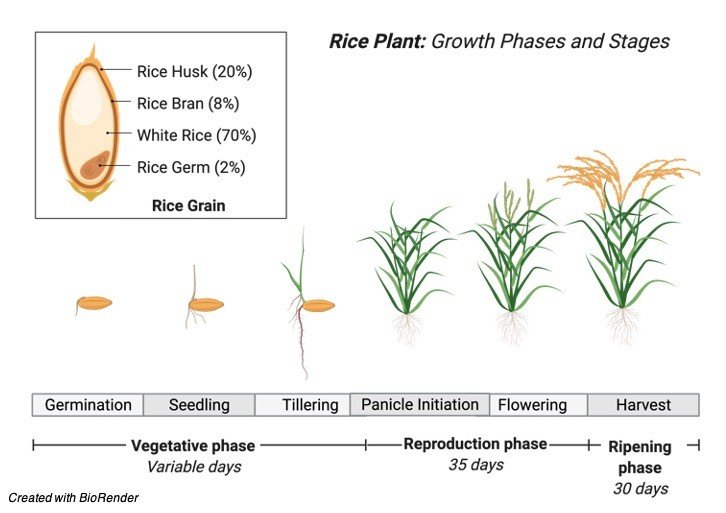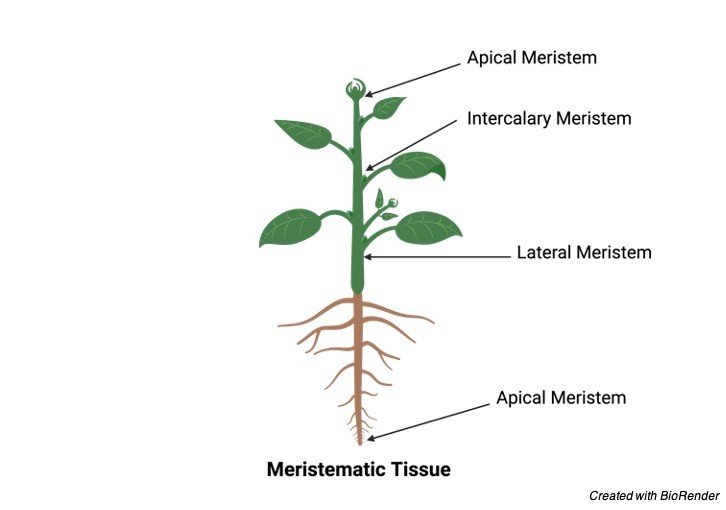What is Plant Growth?
Plant Growth – An irreversible, progressive increase of an organism’s mass over a period of time governed by the synchronous enlargement of basic unit of life – cell.
Every change starts from the smallest part of our body – our cell. Life started from it and gradually progressed to the present-day beings.
The change of one small amino acid which determined the survival whole living organisms on the earth.
The change was supported by an element of GROWTH. Growth is predetermined in the genetic material and are well regulated by complex array of organ system and environmental interaction in higher organisms.
Though plants evolved alongside the animals with more similar metabolic pathways, physiological functions, structural integrity etc.,
The evolution of two kingdom had a set distinct survival strategy which make them unique and well distinguished from each other.
Characteristics of Plant Growth
1. Plants have an open form of growth. These multicellular organism exhibits unlimited growth.
2. New set of features arises frequently to replace the old ones thereby increasing size, girth and survival of the plant.
3. The unlimited growth is supported by the meristems – growing regions of a plant which produces stem cells for unstopping cell proliferation.
4. As growth proceeds, the length of the plant and the girth of the trunk corresponds accordingly to support the whole plant.

5. The plant growth can be plotted in graph against time – this forms the growth curve.
6. Cells are the basic unit of growth that takes place in 3 phases: Cell division phase, cell enlargement phase and differentiation phase.
7. Differentiation, dedifferentiation and redifferentiation are 3 main characteristic feature of cell
8. Dedifferentiation is main character of plant growth. Differentiation is a process where a cell attains a specific role and becomes a mature cell and does not divide. But plants have the process of dedifferentiation where the mature cell gain to differentiate again for cell proliferation
9. Plant growth depends upon various external factors, namely: Light, Temperature, gravity, water and touch.
10. Growth has a regulator which is fixed in the genetic material
11. The plant growth is plastic and are completely determined by the external cues.
Type of Plant Growth
Plant growth can be categorized into many types, such as:
I. Primary and secondary growth:
Primary growth is cell division of apex of root and stem and secondary growth increases the girth of the tree.
II. Limited and Unlimited growth:
When a region of plant stops growing after particular set of cell division. the growth expressed here is limited growth.
For Example: Flower, leaf, fruit.
The root system and the shoots depend only on unlimited supply of cells through cell division this forms the region to be termed with Unlimited Growth.
III. Vegetative and Reproductive growth:
Cell division and production of stem, leaf, branches without flower can be termed as vegetative Growth. Reproductive growth is a type where the plant produces the flowering part the temporary reproductive part for plant.
Plant Growth Curve
The rate of growth is determined by plotting growth against time. The curved obtained is the Sigmoid curve. The sigmoid curve represents 4 phases.
1. Lag Phase: is the initial phase where the cell proliferation starts at a slow and steady phase of growth
2. Log Phase: exponential phase where the cell proliferation takes place rapidly
3. Diminishing Phase: the rate of growth again reduces
4. Stationary Phase: a steady state of growth over time takes place
Phases of Plant Growth
Cell, division, Cell Enlargement and Cell Differentiation are the 3 phases of Plant growth.
I. Cell division: is the process where the stem cell divides into two where one half retains the ability to proliferate later (i.e.) retaining the ability of stem cell. The others half continue to proliferate.
II. Cell enlargement: The divided cell now elongates horizontally by stretching and becomes rigid. The Cell Division and Cell Enlargement are increasing the size of the cells.
III. Cell Differentiation: 3rd stage is the mature stage where the cell loses its capacity to divide further. This phase is irreversible. But the plant cells have the special ability to dedifferentiate cells for future cell division when needed.
The process of dedifferentiated cell to produce new cells through cell division is redifferentiation.
Plant Growth Hormones
Apart from all the factors said above, plant Hormones also plays a very important role in regulating growth. Hormones Such as:
1. Auxins
2. Gibberellins
3. Cytokinins
Functions of Growth hormones are:
1. They aid in cell division
2. Growth promoters for fruiting and flowerings,
3. Enlargement of cells
4. Germination of seed and formation of root.
Not only hormones certain inhibitors are present to inhibit restrictions at certain sites.
The inhibitors are:
1. Ethylene
2. Abscisic acid. Which induces seed dormancy and senescence of the organism.
Meristem
Meristems are regions of stem cell which shows unstoppable growth over the lifetime of a plant.
The main mechanism of cell proliferation is that a group of cells get differentiated from their stem cells by cell division.
One half of the cell retains the capacity of stem cell and other half gets differentiated. The differentiated cells divide continuously till their threshold and then becomes a matured cell.
In young plants all the region were stem cells, later when the plants mature the regions of cell division becomes restricted slowly and are found in localized area of an adult plant.

Types of Meristems
Meristem is present in both shoot and root have similar functions. Different parts of meristems are:
1. Apical Meristem: present in the tips of root and shoot. This meristem is only responsible for primary growth.
2. Lateral Meristem: Present laterally to the plants are responsible for the girth of the tree Example: Vascular Cambium, Cork Cambium
3. Intercalary Meristem: present in between mature cells
Further, the meristems can also be classified as DETERMINATE and IN – DETERMINATE. Determinates are cells whose fate is already determined who lives for short period of time like Bud, leaves etc., Indeterminates are the cell who does not lose his identity throughout their life.
Plant Growth Citations
- Radial plant growth. Curr Biol . 2017 Sep 11;27(17):R878-R882.
- Cytokinin signaling in plant development. Development . 2018 Feb 27;145(4):dev149344.
- The Phloem as a Mediator of Plant Growth Plasticity. Curr Biol . 2019 Mar 4;29(5):R173-R181.
- Molecular Aspects of Plant Growth Promotion and Protection by Bacillus subtilis. Mol Plant Microbe Interact . 2021 Jan;34(1):15-25.
- Plant Growth Promoting and Biocontrol Activity of Streptomyces spp. as Endophytes. Int J Mol Sci . 2018 Mar 22;19(4):952.
- Plant growth-promoting rhizobacteria (PGPR): emergence in agriculture. World J Microbiol Biotechnol . 2012 Apr;28(4):1327-50.
Share









